Oral Surgery
Oral Surgery
Overview
Despite our best efforts to save a tooth, sometimes trauma, gum disease, cracked or broken teeth, and tooth decay can be too significant, in which extraction may be the best option. Our team offers surgical extractions, wisdom teeth removal, gum surgery options, and bone grafting procedures to help improve pain and to help prevent infection. Because we understand the level of anxiety surrounding oral surgery and dentistry in general, we strive to provide our patients with a calm, relaxed environment while not compromising our standard of care. Here at Affordable Smiles, we understand and try to make each process as comfortable and as pain-free as possible.
Teeth Extractions
A tooth extraction is a dental procedure during which your tooth is completely removed from its socket. Sometimes, people refer to this as “pulling" a tooth.
At Affordable Smiles, our dentists prefer to save natural teeth whenever possible. But sometimes, other restorative methods — such as dental fillings or dental crowns — aren’t enough. If your tooth has been badly damaged past the point of repair, then removal may be necessary. Our dentists may recommend tooth extraction if you have:
- Severe tooth decay (cavities)
- A fractured tooth
- An impacted tooth
- Wisdom teeth
- Crowded teeth
- Severe gum disease
- Tooth luxation (occurs when trauma, such as a fall, disrupts the tissues, ligaments and bone that hold a tooth in place) or other
- dental injuries
Periodontology
It is not a given that we must lose teeth as we age. If we maintain good oral hygiene and have regular professional cleanings and oral examinations, chances are we can keep our natural teeth for life. That involves not only caring for the teeth themselves, but also the structures that surround them: the gums and tooth-supporting bone. Gum disease, which is a bacterial infection, threatens these supporting tissues. That is why our dentists are always on the lookout for early signs that patients may not notice. When signs of trouble become apparent, periodontal therapy may be suggested.
Periodontal therapy can take various forms, but the goal is always to restore diseased tissues to health. Gum (periodontal) disease can spread from the gums to the bone that supports the teeth, and may even cause tooth loss in the most severe cases. There are very effective therapies to combat this, ranging from scalings (deep cleanings) that remove plaque and calculus (tartar) from beneath the gum line, to surgical repair of lost gum and bone tissue.
Periodontal therapy includes both surgical and non-surgical techniques to restore health to the tissues that support the teeth (gums and bone) and prevent tooth loss. They include:
- Scaling and Root Planing: These deep-cleaning techniques are the best starting point to control gum disease. Plaque and calculus (tartar) are removed from beneath the gum tissues, using hand scalers and/or ultrasonic instruments.
- Gum Grafting: Sometimes it’s necessary to replace areas of lost gum tissue so that tooth roots are adequately protected. This can be accomplished by taking healthy gum tissue from one area of the mouth and moving it to where it is needed, or by using laboratory-processed donor tissue.
- Periodontal Plastic Surgery: When used to describe surgery, the word “plastic” refers to any reshaping procedure that creates a more pleasing appearance of the gum tissues.
- Periodontal Laser Treatment: Removing diseased gum tissue with lasers can offer significant advantages over conventional surgery, such as less discomfort and gum shrinkage.
- Crown Lengthening Surgery: This is a surgical procedure in which tooth structure that is covered by gum and bone tissue may need to be exposed either for cosmetic reasons (too make the teeth look longer and the smile less gummy) or to aid in securing a new dental crown.
- Dental Implants: Today’s preferred method of tooth replacement is a titanium dental implant, which is placed beneath the gum line and into the jawbone during a minor surgical procedure. The implant is then attached to a realistic-looking dental crown that is visible above the gum line and indistinguishable from a natural tooth.
Sinus Lift
Sinus lift surgery is a treatment approach your dentist may recommend when you desire dental implants but don’t have enough jaw bone to secure the implant. The maxillary sinuses are air-filled cavities that are located just above the back portion of the maxilla or upper jaw. By lifting the sinus and grafting bone in between, there’s more bone for a doctor to place a dental implant.
If you don’t have enough upper jaw bone, the implant can’t properly anchor, and your new dental implant can’t perform some more demanding tasks, such as chewing. Without enough bone, the dental implant won’t properly secure and can fail.
Ridge Augmentation
A ridge augmentation is a common procedure often performed in the area of a missing tooth or teeth to help recreate the natural contour of the gums and jaw that may have been lost due to bone loss as a result of a tooth extraction, or for another reason. The alveolar ridge of the jaw is the bone that surrounds the roots of teeth. When a tooth is removed, an empty socket is left in the alveolar ridge bone. Usually this empty socket will heal on its own, filling with bone and tissue. The previous height and width of the socket will continue to deteriorate over time because, without the tooth in place, there is no longer any stimulation for bone maintenance.
Rebuilding the original height and width of the alveolar ridge is not medically necessary, but may be required for dental implant placement, or for aesthetic purposes. Dental implants require bone to support their structure and when there is insufficient bone, an implant cannot be placed successfully. A ridge augmentation can help rebuild this bone to accommodate the implant.
Gum Grafts & Contouring
Gum tissue grafting is an excellent way to restore healthy gums around the dental roots for a strong and stable smile. In most cases, the gums heal beautifully. However, in some instances, the new gum tissue may appear bulky or excessive. Our doctors can perform laser gum contouring for patients who would like to address these concerns. Gum contouring for receding gums can restore your smile to its original brilliance and beauty, greatly improving your confidence in your appearance.
It is first important to understand the differences between gum tissue grafting and gum contouring. Gum tissue grafting is a type of gum surgery used to add tissue to areas where the patient is deficient. For example, if the gums are pulling away from the teeth and the roots are visible, gum tissue grafting would be necessary.
In contrast, gum contouring is performed when there is too much gum tissue present. During this procedure, the doctor removes excess tissue and reshapes the gum line. These procedures are independent of one another. If a patient undergoes gum grafting, it does not mean they will require gum contouring in the future. Additionally, patients can also be born with excess gum tissue. In many of these cases, these individuals wish to balance out the appearance of their smile with a cosmetic gum contouring procedure.






















